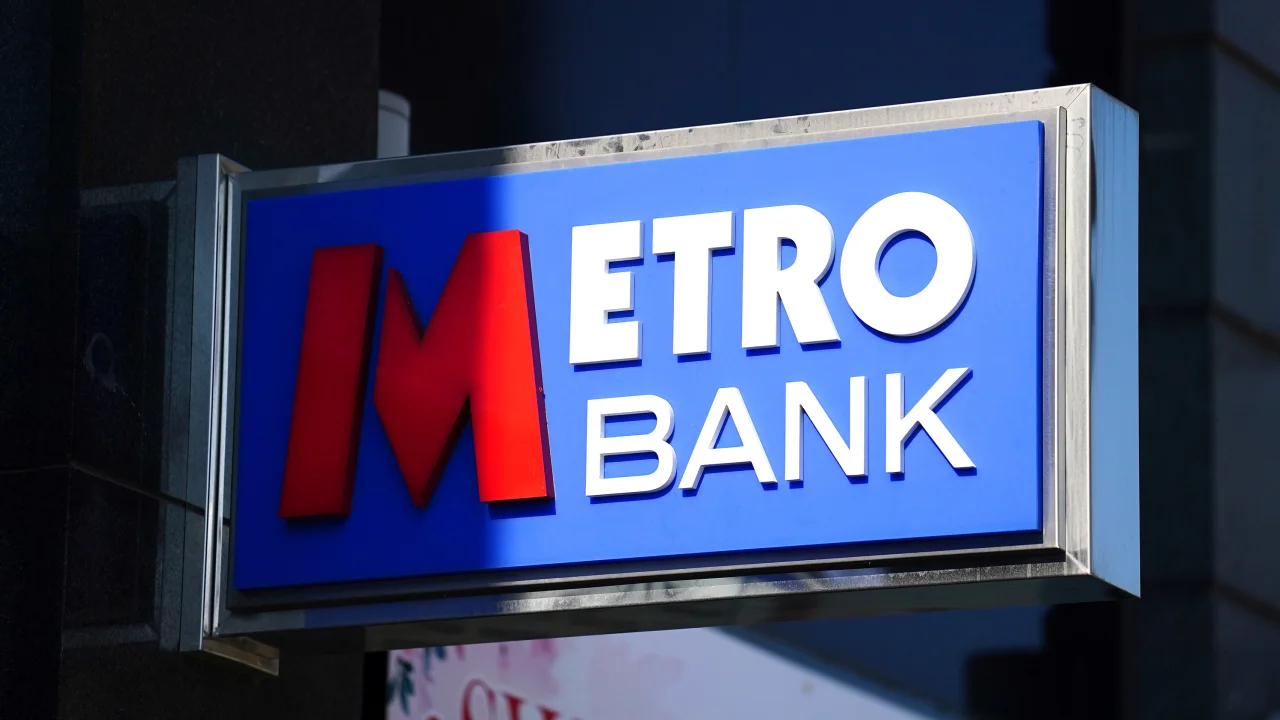
Another Bank Just…

The Canary in the Coal Mine
Fasten your seat belts, because the financial world is on a rollercoaster ride that’s about to take a steep plunge. A UK bank teeters on the brink of bankruptcy, sending shockwaves through the global banking system. But this isn’t just about one bank; it’s a symptom of a far more insidious issue. The global monetary system is showing signs of fracture, and we’re not even in the final inning of this crisis.
The UK Bank: A Microcosm of a Larger Crisis
Shares of the UK-based Metro Bank plummeted by as much as 31%, following reports that the bank is urgently seeking to raise $500 million to stabilize its finances. The bank insists it meets minimum regulatory capital requirements, but the market isn’t buying it—literally.
Regulatory Illusions
The bank’s situation exposes the fallacy of relying solely on regulatory frameworks like Basel III. These banks meet all the capital ratio requirements one day and file for bankruptcy the next. It’s like saying the Titanic is unsinkable because it meets all maritime safety regulations.
Desperation Tactics
Metro Bank is considering everything from issuing shares and corporate bonds to refinancing its debt. This is not the behavior of a bank on “rock-solid footing,” as regulatory compliance would suggest. It’s more like a drowning man clutching at straws.

The Global Context: Deflationary Money and Broken Systems
This isn’t an isolated incident; it’s a red flag signaling systemic issues in the global monetary system. Jeff Snyder calls it “deflationary money,” a phenomenon where the monetary system contracts, leading to increased perceived counterparty risk and tightened liquidity.
Deflationary money isn’t necessarily that there is too little money, rather too little of what there is being redistributed and used. This is largely, though not entirely, a failure of intermediaries. Less money being circulated, more hoarded.
— Jeffrey P. Snider (@JeffSnider_AIP) April 22, 2023
The Domino Effect
When one bank tightens its belt due to escalating counterparty risk, it sets off a chain reaction that reverberates through the financial ecosystem. This isn’t theoretical; it’s happening right now. Silicon Valley Bank, First Republic, and Credit Suisse have all felt the squeeze. These institutions aren’t anomalies or statistical outliers; they’re the financial equivalent of canaries in a coal mine. Their struggles serve as early warning signals, alerting us to a toxic atmosphere that’s suffocating the global banking system. If one falls, it’s not a stretch to say others could follow in a catastrophic domino effect that could topple even the mightiest financial giants.
The Illusion of Liquidity
The global monetary system is a complex web of trust, built on the bedrock of perceived counterparty risk. When that risk is low, liquidity flows like a river, nourishing economic landscapes far and wide. But when that risk escalates, the river dries up. The system doesn’t just contract; it constricts, choking off vital financial lifelines. This isn’t merely an issue for the banks; it’s a crisis that impacts the entire economy. Businesses can’t get loans, consumers can’t spend, and the gears of commerce grind to a screeching halt. The liquidity we took for granted reveals itself to be a mirage, evaporating just when we need it most.
The Timing: The Ticking Time Bomb
Why is Metro Bank teetering on the edge of financial ruin now, as opposed to 2020 or 2018? This isn’t a fluke or a random occurrence; it’s a symptom of a much larger, systemic issue. The global monetary system is contracting, and it’s pushing banks that were already on shaky ground right over the cliff. It’s as if these banks were walking a financial tightrope, and the contracting monetary system just cut that rope. The timing isn’t coincidental; it’s consequential, signaling that the financial ground beneath us is more unstable than we ever imagined.
The Eye of the Storm
Don’t be fooled into thinking we’re nearing the end of this banking crisis. If this were a baseball game, we’d be in the fifth or sixth inning, not the ninth. The financial tempests that could be unleashed in 2024 might make the crises of 2023 look like child’s play. To put it in perspective, the nominal value of banks that have collapsed in 2023 has already outstripped the calamities of 2008—and we’re not even through the year yet. We might be in the eye of the storm right now, enjoying a deceptive calm, but make no mistake: the worst could be yet to come.
The Regulatory Mirage: A False Sense of Security
Regulators and ratings agencies like Fitch are always a step behind, only putting banks on watch for downgrades when they’re already sinking. It’s a reactive approach, not a proactive one. And it’s a dangerous game that could cost us all dearly.
We’re standing on a financial fault line, and the tremors are getting stronger. This isn’t just about one UK bank; it’s a warning sign of a systemic issue that could lead to a global financial earthquake.
So, what’s your move? Are you going to trust the regulatory safety nets that have proven to be as reliable as a paper umbrella in a hurricane? Or are you going to prepare for the financial storm that’s brewing?
